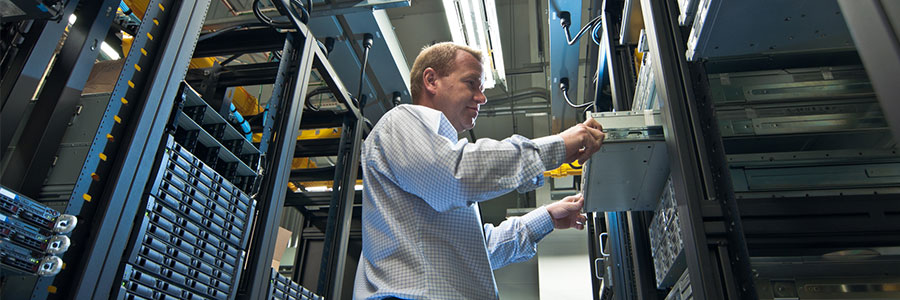Safeguarding your small-business network is crucial to running your operations smoothly and protecting sensitive information. With cyberattacks becoming increasingly sophisticated, it's imperative that you take proactive measures to secure your network and prevent potential data breaches.
Your business network isn’t as secure as you think: 7 Warning signs

When it comes to cybersecurity, most business owners believe that they have taken all the necessary measures to secure their network. However, the harsh reality is that no network is ever 100% safe from cyberthreats and attacks. Whether it’s a small startup or a large corporation, every business is vulnerable to cybersecurity risks.
Network design: Best practices for success

A well-designed network is essential for any small- to medium-sized business (SMB). It allows you to easily share resources, collaborate with employees, and connect with customers. But what is network design, and why is it so important?
Network design is the process of planning and implementing a computer network that meets the specific needs of a business.
The do’s and don’ts of network cabling

The increasingly digital nature of IT can make us forget how important physical cabling is. However, ignoring best practices for creating a physical network can lead to decreased efficiency, increased risk of network issues, and even physical injury. Here are a few do's and don'ts of network cabling that you should follow to ensure your network's physical infrastructure remains efficient, effective, and safe for years to come.
How do you set up a small business network?

A small business network makes your company more productive, efficient, and secure, but you only realize these benefits with thorough planning and implementing. While every business and their network needs are different, this guide will show you general considerations to keep in mind, as well as basic steps in the setup process that all networks can benefit from.
What is a network design plan, and why is it important?

Many businesses today rely heavily on seamless and efficient connectivity to thrive. Without the right network design in place, a company can find itself unable to access crucial data and resources. To ensure that this doesn't happen, it's important for businesses to take the time to create a detailed network design plan.
How improper cabling leads to reduced network performance

A network is the backbone of any modern business, and ensuring its performance is always up to scratch is critical for productivity and morale. When network performance and reliability aren’t where they should be, there are several factors to consider.
5 Important considerations when designing your office network

Laying down the infrastructure for your office network might not sound like the most glamorous of projects, but it’s far from trivial. It will become the backbone of your business and something your employees will come to rely on every day. Get it wrong and productivity will suffer, which will result in unhappy customers and stunted business growth.
6 Reasons why your business needs structured cabling

Cabling might not be the most glamorous area of IT, but no network can exist without it. Improper cable management can harm your business in various ways, such as by reducing performance or compromising workplace safety. That’s why there’s a lot of talk in the business computing world of structured cabling, a standardized service that ensures a fast and seamless experience across a wide range of complex environments.


